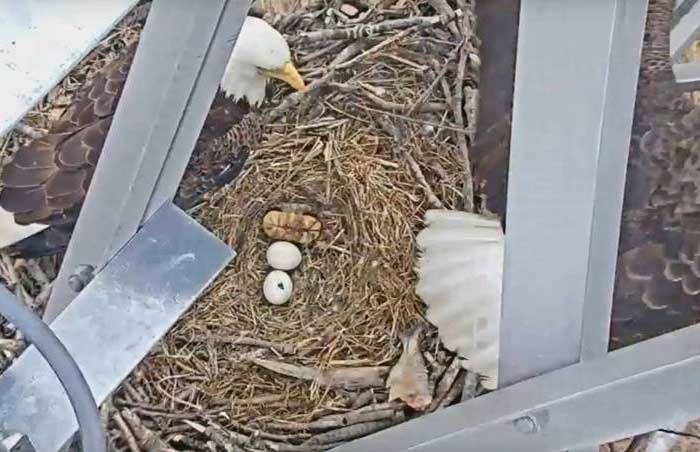The PSE&G NJ Audubon Eagle Cam
You are watching a previously recorded cam session
In 1973, when the Endangered and Nongame Species Conservation Act was passed, there was just one nesting pair, in a remote forest in Cumberland County. Today, there are more than 150 nesting pairs of bald eagles statewide.
Stay tuned for our nesting pair to return soon!
Welcome to the PSE&G NJ Audubon Eagle Cam
This is a live feed of two nesting eagles that have called one of PSE&Gs transmission towers in Salem,NJ home.
The recovery of the Bald Eagle in New Jersey is a success story. In 1973, when the Endangered and Nongame Species Conservation Act was passed, there was just one nesting pair, in a remote forest in Cumberland County. Thanks to efforts from organizations including NJ Audubon, NJ Division of Fish and Wildlife and Conserve Wildlife Foundation of NJ, the species is coming back from the brink of extinction. Today, there are more than 150 nesting pairs of bald eagles statewide. Eagles are still on the endangered species list, but by protecting habitat and waterways used by eagles, smart conservation will help to maintain and enhance this species’ recovery.
The pair of eagles you see here are returning to nesting grounds that are now 18 years old and on a Public Service Electric and Gas Company (PSE&G) transmission tower. For the first time in this location, you can watch live online as a new generation of eagles are born and raised, thanks to a partnership between New Jersey Audubon and PSE&G.
Keep in mind eagles will be eagles, meaning they may not appear for hours or they may not leave the nest for hours. You can move the red slider on the YouTube window back in time, up to 90 minutes, to see if the eagles appeared earlier.
Special thanks to EDM International, Inc. who helped with the installation. EDM is one of PSE&G’s engineering and avian biology consulting firms that is called on for special projects like this eagle cam. For this project, EDM helped guide PSE&G through the planning and design of fecal-shields to protect the line from outages. The system is powered by solar panels that also charge backup batteries. Communications are through a wireless cellular connection/antenna. The avian biologists provided guidance during the process and installation to avoid potential disturbances to the Bald Eagles to improve the chances of their successful return to the tower.




